Grease filters for hoods: types, their features and disadvantages + how to choose
Kitchen hoods remove contaminated air from the kitchen, most often to the street, and it would seem why filtration is needed in this case. After all, these are additional costs and hassles associated with the selection, purchase, and replacement of equipment responsible for cleaning.
All this is true, but it is worth knowing that grease filters for the hood are a mandatory part of its design and saving in this case is to your detriment. Moreover, the losses can be serious, including equipment breakdown and ignition of the resulting fatty deposits.
The content of the article:
Why is air purification from fat necessary?
Modern hoods can operate in two popular modes. The first is the removal of air outside the kitchen, that is, to the street or into a ventilation shaft. The second method is recirculation, after which air masses that have already been used, but cleared of contaminants, enter the room.
Depending on the operating mode of the hood, grease filters perform the following functions:
- When venting. They protect structural elements, including the engine, from the impact of large particles of dirt (grease, soot).
- When recirculating. They purify the air from the above elements in order to purify the air, and also serve to protect the engine and other parts of the ventilation equipment design.
In addition, grease traps in recirculating hoods protect carbon filter, used to remove odors, gases, and some combustion products.
As the information presented indicates, a grease filter for any modern hood is necessary to protect its structural elements from the effects of any large particles of dirt.

Why is this necessary? If you do not clean it from grease and soot, then in just a few weeks all kinds of internal surfaces of the hood itself and the engine will be covered with a suspension of layered dirt particles.
Its abrasive properties will be enhanced by unfiltered dust. This will cause a significant increase in the load on all rubbing elements of the hood, first of all this concerns an expensive engine.
As a result, increased wear and tear will begin, after which premature breakdowns will occur, which will lead to significant financial losses.

When recirculating, the responsibilities of the grease filter are added. And poor cleaning will lead to significantly greater negative consequences.
The reason for this lies in the fact that the air that will be reused is cleaned not only of fat and combustion products, but also of odors.
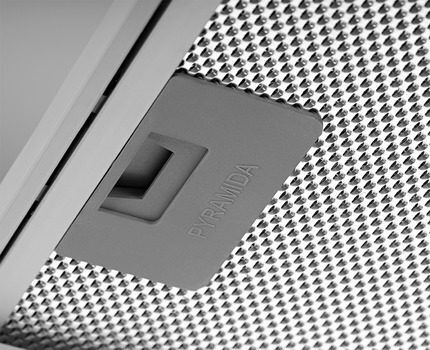
Therefore, an expensive filter element is additionally used to remove them, which should also be protected.After all, dust and grease deposits easily, and most importantly quickly, lead to loss of effectiveness of the odor filter.
As a result, cleaning coal hood will not be carried out, and this again means additional financial costs and harm to health.
Types of grease filters
The industry supplies a large number of products for filtering fat particles and combustion products. They come in all sorts of sizes, differ in materials of manufacture and efficiency.
Main product classification
But despite all the diversity, there are only 2 main types of grease filters. These categories include disposable and reusable products. Each type has a number of advantages and disadvantages that you should pay attention to when purchasing a hood or the filter elements themselves.
Disposable filters. As the name indicates, all products belonging to this category are used once, that is, until they become dirty. Since after this they lose their effectiveness and do not provide the proper level of cleaning.
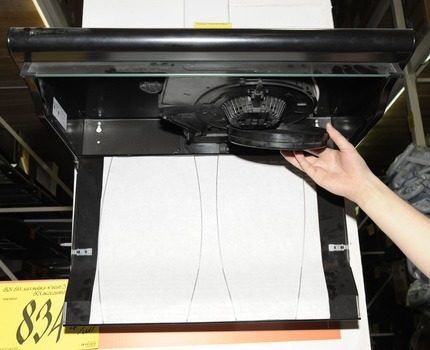
Reusable filters. Elements belonging to this type are used together with the hood for the entire period of its operation. To ensure high-quality filtration, they must be periodically cleaned of accumulated fat and combustion products.
Modern grease filters are made from synthetic and organic non-woven fibers or metals. Regardless of the material they are made of, they are all easy to use and capable of providing sufficient cleaning quality, but that is where the similarities end.
Fiber grease filters
They are mainly made from synthetic materials: acrylic, polyester fibers, which are also simply called padding polyester.
But non-woven fabric made from cellulose is also often used. Therefore, the products are paper-like, that is, organic. To increase their strength, sizing is often used.
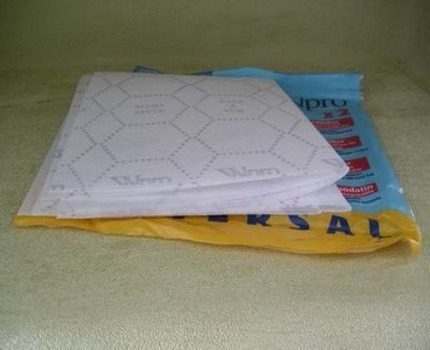
Regardless of the origin of the fibers, filters made from them are always disposable. With the exception of some cases, today you can find acrylic products that are allowed to be used multiple times, but they are still not fully reusable.
Since after each cleaning their effectiveness decreases, their service life is short. In addition, disposable products belong to the cheapest segment of filter devices.
This is their disadvantage - although the cost of fiber products is several times less than metal ones, they will need to be thrown away every few months, which leads to regular waste.
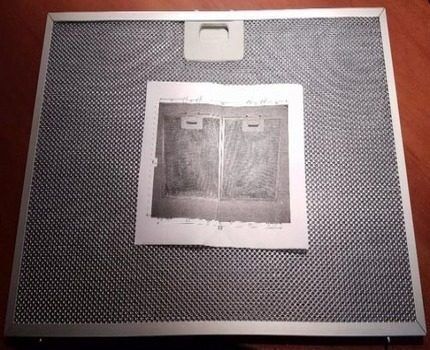
Sometimes owners try to extend the service life of disposable filters by washing them, which is absolutely not allowed. Since after any such treatment the structure of the fibers is disrupted, after which the product will no longer be able to perform high-quality cleaning. Which will lead to negative consequences in the form of increased wear and tear of equipment.
Metal grease traps
All kinds of filters made of metal are always reusable, or rather, they are used for the entire service life of the hood itself.
The manufacturing material can be:
- foil;
- stainless steel or galvanized steel;
- aluminum.
When using the first option, several layers of foil are taken to make a filter device. To increase efficiency, perforation is used - the holes made with it help to more effectively fight dirt. Such filter elements do the job successfully, but their strength and durability indicators are not the highest.
Products made of stainless steel or galvanized are guaranteed to last as long as a hood. They have excellent strength, safety, high efficiency, and corrosion resistance.
Although, if not properly cared for, traces of rust can be seen on the metal surface. The most significant drawback is the considerable cost, which is why this category of filters can only be seen on hoods of at least the middle class.
Aluminum fixtures are also durable, just like steel ones. They are distinguished by efficiency, strength, and durability. Sometimes anodizing is used to improve the latter characteristic, which eliminates oxidation of the material.
The disadvantage of the products is their high cost. This is especially true for filters made using anodizing - they are installed only on expensive hoods. Any of the metal grease filters is a cassette consisting of a durable frame and thin mesh sheets of steel, aluminum, and foil.
Actually, they are responsible for cleaning the air from pollution.All mesh cells are rotated at a certain angle, which allows you to change the direction of flow to effectively capture dirt particles.
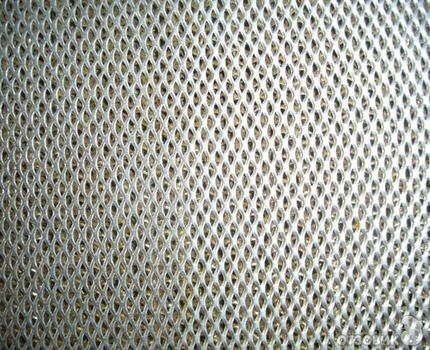
The mesh can be asymmetrical or uniform. None of the types of perforation has obvious advantages, nor any disadvantages, so you should not pay attention to this point when purchasing. To increase efficiency, filter elements can consist of several layers of mesh.
In this case, the air will change direction many times, which will allow you to catch more fat and combustion products. For ease of use, manufacturers often divide one filter into 2-3 separate cassettes. So, it is more convenient to dismantle them, clean them and install them back.
Dimensions of grease filters
All kinds of reusable metal devices are most often used throughout the life of the hood, so the question of changing the elements responsible for cleaning arises extremely rarely.
But, if you want to replace the old filter material with a more efficient one, then this is not difficult to do. Since the industry produces products of various sizes.
All you need to do in this case is to find out in the attached kitchen hood The passport contains the exact dimensions of each cassette and the filter as a whole. If the sizes are non-standard, then even then you will be able to get out of the situation. Due to the fact that there are a sufficient number of manufacturers in the country who are ready to make a piece product, but its cost will be higher.
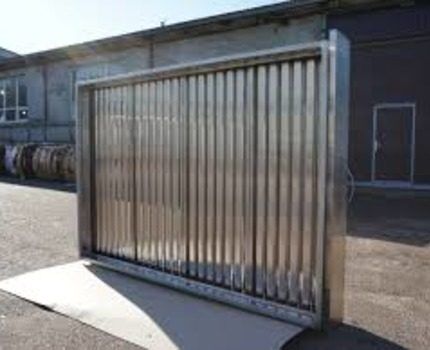
The issue of size can be resolved quite simply by using disposable grease filters, even with the most non-standard sizes. In this case, you simply buy a larger product and cut off all excess with scissors, and regular ones at that.
This is easy to do, because disposable filters are made only from synthetic and organic fibers. They are even visually similar to ordinary rugs and sponges, the processing of which does not pose any difficulties.
Grease filter maintenance
All reusable products used to purify air from grease are easy to maintain. It consists mainly of removing contaminants accumulated in the mesh cells. To perform this procedure, the filters are removed from their seats.
This is not difficult to do - they are secured using convenient clamps that allow you to quickly lock/unlock them. Next, the filter is placed in a container with soapy water and treated with a brush.
As a detergent, you can use ordinary laundry soap, half a piece of which must first be grated on any coarse grater, and the resulting shavings should be poured with 3 liters of moderately heated water. Despite its simplicity, this is a fairly effective and economical way to quickly get rid of dirt.
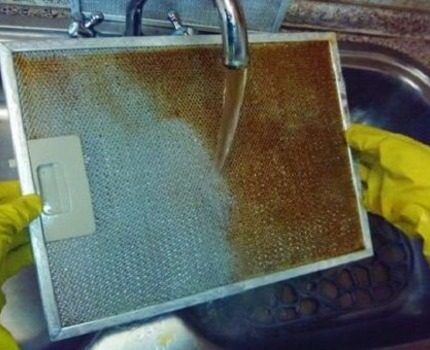
If you don’t want to bother with preparing a soap solution, then you can take any specialized products, including those used for washing dishes. After cleaning the mesh material, the filter must be rinsed under running water.
In the presence of dishwasher and its appropriate dimensions, the washing procedure can be automated. But it is not always possible to wash a very dirty product this way. Therefore, hand washing is considered the main method.
To remove dirt you should not use:
- washing powders - their use often leads to scratches on the metal surface;
- soda for cleaning aluminum - this product often leaves brown stains on the surface of the metal;
- alkaline, acid preparations for cleaning aluminum - these potent substances will lead to darkening of the specified metal;
- abrasive brushes - they leave noticeable marks on the metal.
If the filter element is made of aluminum, then when washing in the dishwasher there is no need to select high-temperature modes. Since hot water can contribute to the oxidation of the specified metal, which will lead to its darkening.
After completing the cleaning procedure, the product is allowed to dry, at room temperature and after any type of cleaning. Failure to do so may result in corrosion.

Maintenance of disposable filters comes down to monitoring their condition and replacing them with a new product after contamination. It is not difficult to determine the moment of replacement, since special marks begin to appear on the surface of the product, indicating the maximum permissible dirt content in the pores of the cleaning element.
Guidelines for the right choice
If you need to purchase a grease trap for your existing hood, you should first check its dimensions. Next you need to decide on the type of filter.But it should be understood that inexpensive disposable products will be a practical option only for small hoods, built into kitchen furniture.
In addition, these devices should not be used if there is frequent cooking in the room. In this case, disposable “mats” will quickly exhaust their capabilities, after which they will have to be disposed of.
Buying a reusable foil product can only be driven by a desire to save money. Since only products made of steel and aluminum can be considered truly practical filters without any restrictions.
The latter require more careful care, which will help avoid oxidation with subsequent discoloration, but they are considered more durable. Although this advantage is conditional, since steel elements can last for decades.
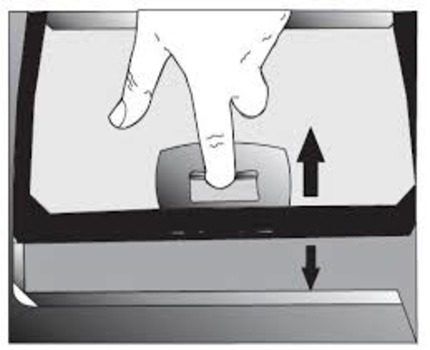
If you want to choose the most practical option, then you need to buy a product consisting of 2-3 cassettes. After all, a large-sized grease trap is more difficult to wash and perform other manipulations with it, for example, installation and dismantling.
It should also be remembered that a larger number of mesh layers provides better cleaning quality. But the cost will be higher.
After purchase, you should make sure that between the filter frame and the housing full-size hood there are no gaps. Because their presence will lead to dirt getting inside the ventilation circuit, which should not be allowed.
Sediment of fat on the walls of the canals ventilation system in the kitchen inevitably leads to a narrowing and reduction in the speed of air movement through the air duct.This means that it entails a loss of qualitative characteristics of the microclimate with all the accompanying not very attractive consequences.
Conclusions and useful video on the topic
Most often, hood owners only have difficulty cleaning the grease traps from dirt. The following video will show you how to perform this procedure correctly:
This video will show how the owner of a hood can get out of the situation if there is no grease trap of suitable dimensions:
Modern grease filters are practical products that can effectively clean the air of contaminants. But it should be remembered that the best result is possible only with the correct selection of a grease trap.
This applies to size and material of manufacture. Also, we must not forget about the timely cleaning of the purchased filter, or all its effectiveness will be reduced to zero.
Please write comments in the block below. Ask questions and post photos on the topic of the article, share your own opinion and useful information that will be useful to site visitors. Tell us about how you selected, installed, changed or cleaned the grease filter with your own hands.




By the way, almost all people neglect such hoods, but in vain. I agree with the author. If you constantly cook dishes from fatty meat, then you will have to pay much more and more often for repairs and restoration of a decent appearance of the kitchen than for this device. The hood is clearly worth the money; after all, it catches a lot of soot and fatty particles suspended in the air.
I have a regular hood with a 100 x 100 fan.The grease filter there was made of aluminum mesh in three layers, over time it “shrank” and was damaged in several places. The air began to flow in a direct flow, I did not attach any importance. And this led to the fan becoming covered with a coating that cannot be completely cleaned off, like some kind of epoxy... In addition, it began to make terrible noise, I had to look for a new fan, it turned out that they are not very cheap... In short, after that I already I made a grease filter myself from a fine metal mesh, made seven layers to be sure.
Good afternoon, Roman. Sorry for the trouble, could you do the same for me, for a fee, of course, since mine is also leaking and I can’t find a filter of the same size anywhere. I can bring the filter wherever it is convenient for you. Sincerely!
Hello Roman. If it’s not too much trouble, could you tell us how and from what materials (in which stores to look) you made the grease filter. I will be very grateful.
No matter how good the filter is, it needs to be cleaned constantly. I have aluminum grates, but they become clogged with grease very quickly, which leads to a deterioration in the pulling properties of the device and, as a result, a greater load on the motor.
By the way, it is also advisable to clean the motor at least once every two years, because any filter allows some of the grease to pass through, which settles on the impellers and bearings of the motor itself. And the motor costs as much as the floor of a hood... And in some models, as much as the entire hood.
Good afternoon, Dmitry. In order of the questions covered by your post, I’ll explain:
1.The frequency of cleaning and replacing filters is regulated by the corresponding section of the kitchen hood passport. As an example, I have attached a screenshot of the KUPPERSBERG brand passport. The cleaning cycle is a function of the intensity of use. In other words, the manufacturer provided average statistical standards;
2. The load on the electric motor is dictated by the volume of air moved by the fan impeller. A smaller volume corresponds to a smaller load - a clogged hood loads the electric motor minimally (I have attached a screenshot of the load graph - the required curve is highlighted in red);
3. If the hood’s passport does not provide for cleaning the electric motor, then this should not be done. Structurally, the electrical and mechanical parts of the electric motor are isolated from the air flow - attached screenshot.
Hello. As I understand it, the grease trap is disposable, and there is no metal one for the hood?
I have this one, don’t I need it? The round coal is standing.
Good afternoon, Alla.
Look at the first photo at the beginning of the article. It shows a grease filter similar to the filter on your hood. Which filter is hidden next - read in the kitchen hood's passport. There will also be a description of the frequency and cleaning technology - metal can be washed independently. Some filters, hidden by a metal “grid,” can also be cleaned, while others require replacement.
The operation of the hood is described in the passport - for example, I have attached a screenshot of the Jetair TORY gadget, similar to yours.
Our hood has been installed since November 20th. My wife washes these metal filters once a month.But still, today (9 months have passed) grease dripped from the hole where air is sucked into the engine.
It turns out that these metal grilles (filters) are complete crap. Although the hood is not cheap.
Good article. Thanks a lot. Since I am assembling my own hood. So to speak, according to your needs. I don’t cook often, but globally and on all burners at once. An ordinary hood was simply hung. A 2300cc duct fan was installed... And 2 rows of filters. Since the power allows